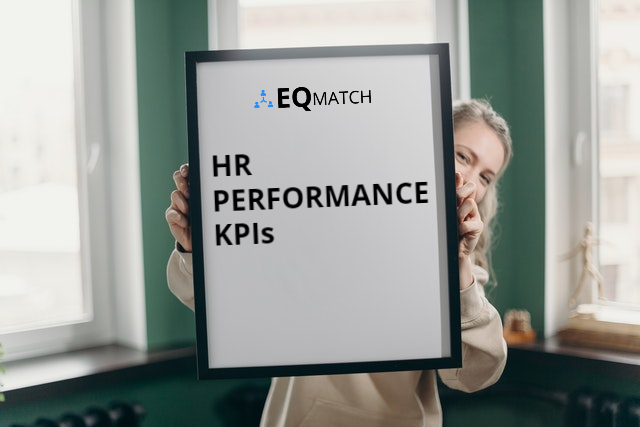HRM Metrics, or HR metrics, provide vital insights for HR leaders in making important decisions that could boost business productivity.
Think of HR metrics as operational measures to assess the efficiency, effectiveness, and impactfulness of an organization’s HR measures.
We covered an overview of human resources KPIs in our blog Human Resource KPIs: The Definitive Guide.
In this post, we shall discuss the most important human resource performance KPIs.

Human Resource Performance KPIs
New Hire Performance
This metric helps HR professionals assess the performance of new hires with that of other employees. Evaluating performance reports can help analyze this HR KPI.
Internal Promotion Rate
What is the state of employee retention in your organization? With the help of this HR performance KPI, you can evaluate employee retention. The formula for internal promotion rate is as follows:
The number of Promoted Employees/ Total number of employees.
Rate of Internal Job Hires
Thus human resource KPI demonstrates the effectiveness of organizational talent development.
Rate of Internal Referral Hires
Allows managers to see the value-added when current employees help to identify and acquire talent.
Rate of Internal Referral Hires
Employee referral can help you acquire talent. The average employee has about 150 contacts on social media networks. That means 15,000 contacts for every 100 employees.
Did you know that employee referrals have the highest applicant-to-hire conversion rate?
Internal Promotions vs External Hires
This metric plays an important role in organizational succession planning in human resource management.

Download our Human Resource KPI dashboard template FREE
Percentage of Job Candidates Meeting Job Requirements
Helps in evaluating the effectiveness of job postings in reaching top candidates.
HR-to-Employee Ratio:
This human resource metric helps understand HR efficiency at an organization.
Put simply, it is the ratio of HR professionals and the total number of employees at an organization/.
A high ratio means that there are relatively more human resource professionals working at a company. A lower number, on the other hand, could mean the opposite.
However, it is to be noted here that several factors come into play when assessing this ratio. The average HR to employee ratio stood at 2.6 as per a 2017 SHRM study.
This ratio is highly dependant on the total employee strength at a company. Other factors such as HR tech capabilities and budget also affect this metric.
Percentage of Workforce Below Performance Standards
You can use annual performance reviews to calculate an average figure across your organization, and take necessary measures to improve this HR KPI.

Cycle Time To Process Payroll
This human resource kpi shows the timeframe of the process.
It is important to find out the number of business days in the payroll process, from start to finish, when using this HR metric. The cycle time to process payroll gives you a bird’s eye view of your human resources.
Therefore, it helps the administrator have an objective view of the quantity and quality of work each employee does.
Cycle Time To Resolve Payroll Errors
This human resource metric is defined as the number of business days it takes to resolve an employee-reported payroll issue.
Depending on the size of the business, this number varies between two and four days for the best-performing organizations and 5-10 days for the worst-performing companies
Now that we have covered some of the most important human resource performance KPIs, let’s talk a little about leading vs lagging HR metrics.
Leading vs. lagging KPIs
A leading metric relates to future developments and causes.
For instance, employee productivity is a leading HR KPI for labor costs in an organization.
A lagging metric, on the other hand, addresses developments that have already taken place (in the past).
When talking about labor costs, employee productivity is a leading metric whereas sickness rate would fall under the lagging metric domain.
It is important to view these two types of metrics in the right light.
Let’s say supporting employee qualification is a strategic business goal.
In that case, time to proficiency would be a leading HR kpi, and the percentage of employees who completed the qualification would constitute a lagging kpi.
After all, when employees take less time to complete training, chances are they are more likely to become productive and innovative in a short time.
In this case, the lagging KPI would prove to be more useful than its ‘leading’ counterpart.
Human Resource Management professionals focus on the ‘context’ when using these leading and lagging indicators. A balance scorecard includes both lagging and leading indicators and should provide a statistical overview of human resources.




No responses yet